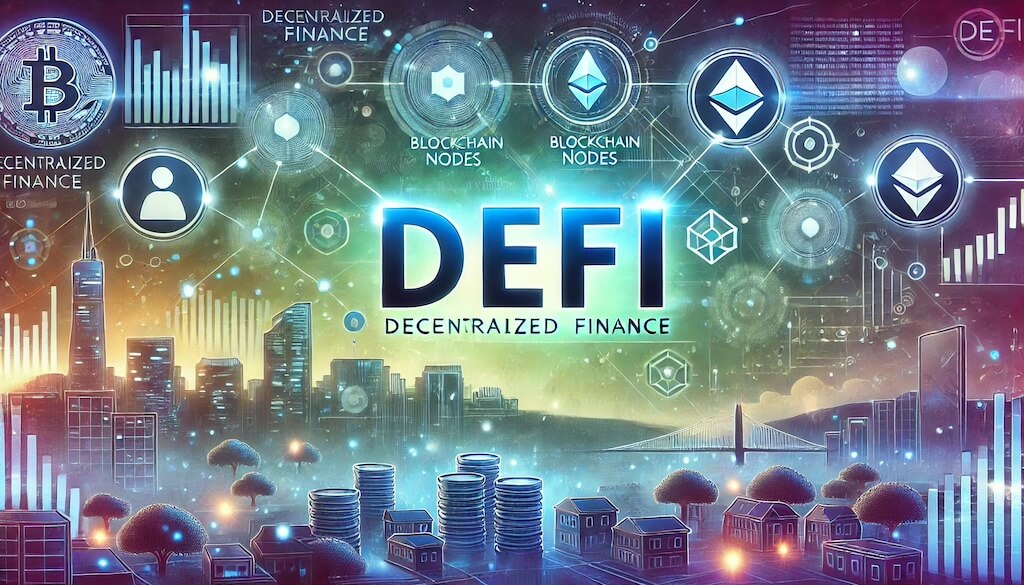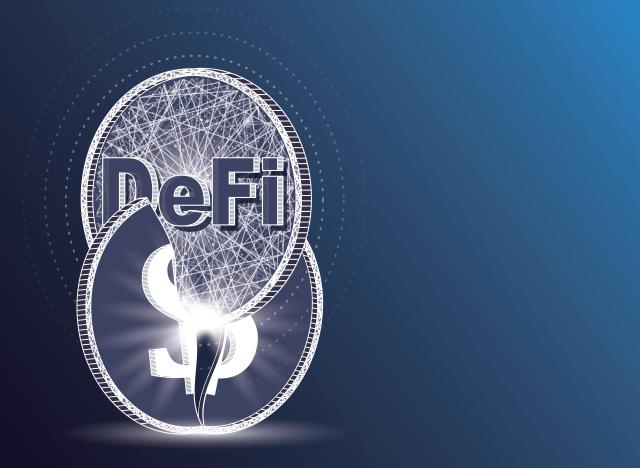Introduction
In recent years, decentralized platforms have gained significant traction across various sectors, from finance and healthcare to social media and digital identity management. These platforms, powered by blockchain technology and other decentralized protocols, promise to offer a more secure and user-centric alternative to traditional centralized systems.
One of the most significant challenges that centralized platforms face is the threat of identity theft and data breaches. Cybercriminals often exploit single points of failure, such as centralized databases, to gain access to vast amounts of sensitive personal data. With data breaches becoming more frequent and damaging, users are increasingly concerned about the safety of their information online.
Decentralized platforms aim to mitigate these risks by offering a new paradigm of data ownership, security, and privacy. By leveraging distributed ledgers, encryption, and user-controlled data, decentralized platforms provide mechanisms that are fundamentally more resistant to identity theft and data breaches.
This article will explore how decentralized platforms are addressing the critical issues of identity theft and data breaches. We will delve into key concepts such as user control over data, cryptographic security, decentralized identity management, and the implications for privacy in a world that is increasingly digitized.
1. Understanding the Problems of Identity Theft and Data Breaches
1.1 Identity Theft
Identity theft occurs when a malicious actor gains unauthorized access to someone’s personal data, such as social security numbers, bank account details, or passwords, with the intent to steal money, commit fraud, or impersonate the victim. It typically happens through methods like phishing, social engineering, or exploiting vulnerabilities in centralized systems.
- Impact: Identity theft can have long-lasting effects on an individual’s financial stability, reputation, and personal safety. Recovering from identity theft often involves extensive legal and financial intervention.
1.2 Data Breaches
A data breach refers to the unauthorized access, acquisition, or disclosure of sensitive personal or corporate data. Large centralized organizations store massive amounts of sensitive data, such as customer names, addresses, passwords, and payment information, which makes them lucrative targets for cybercriminals.
- Impact: Data breaches can lead to the exposure of vast amounts of personal information, with the potential to cause financial losses, reputational damage, and privacy violations. Companies and users alike are often left vulnerable when their data is compromised in such breaches.
1.3 Traditional Centralized Platforms’ Vulnerabilities
Traditional centralized platforms, such as banks, social media networks, and online stores, store sensitive data in large, centralized databases. These platforms represent a single point of failure, meaning that if an attacker successfully breaches the database, they could access vast amounts of personal data.
- Problem: A breach at one point can expose millions of users’ data, leading to catastrophic consequences for privacy and security. Additionally, users have little control over their personal information, as it is stored and managed by centralized entities that may not prioritize security or privacy.
2. How Decentralized Platforms Mitigate Identity Theft and Data Breaches
Decentralized platforms aim to reduce the risks of identity theft and data breaches by shifting away from the traditional model of central data storage and control. Instead, they use distributed technologies that provide better data security, enhanced privacy, and greater user control over personal information.
2.1 User Control and Ownership of Data
In decentralized platforms, users retain full control over their personal data. Unlike centralized systems, where personal information is stored in a central server controlled by a single entity, decentralized platforms allow users to store their data locally or on distributed networks where they maintain ownership and access rights.
- Decentralized Identity Management: Platforms such as SelfKey, uPort, and Sovrin use blockchain to create self-sovereign identities (SSIs). These systems allow individuals to control their identities, access credentials, and personal data without relying on third-party intermediaries.
- Impact: By giving users control over their data, decentralized platforms significantly reduce the risk of unauthorized access and identity theft. Even if a decentralized platform is hacked, the attacker is not able to access sensitive personal data because it is not stored in a central location.
2.2 Cryptographic Security and Data Encryption
Cryptography plays a pivotal role in securing data on decentralized platforms. Through the use of public-key cryptography, personal data can be encrypted, ensuring that only the intended recipient has the key to decrypt and access the information. This encryption is applied at the individual level, which means that even if data is intercepted during transmission, it remains unreadable.
- Zero-Knowledge Proofs (ZKPs): One of the most advanced cryptographic techniques used in decentralized systems is the use of zero-knowledge proofs. ZKPs allow users to prove their identity or other characteristics (e.g., age, address) without revealing sensitive data to the other party. This enables trustless interactions while maintaining privacy.
- Impact: Cryptographic techniques like encryption and ZKPs make it much harder for attackers to access or tamper with personal data. As a result, even in the case of a data breach, stolen data would be unusable without the decryption keys, which only the legitimate user holds.
2.3 Distributed Data Storage
Unlike centralized platforms, which store data on centralized servers, decentralized platforms often use distributed storage systems. These systems fragment data into smaller pieces and distribute them across a network of nodes, ensuring that no single point of failure exists. Filecoin and IPFS (InterPlanetary File System) are examples of decentralized storage solutions that provide secure, redundant storage without relying on a central server.
- Impact: Distributed data storage ensures that even if an attacker gains access to one node, they cannot obtain the complete dataset. Data remains fragmented and encrypted, providing multiple layers of security that centralized systems cannot match.
2.4 Decentralized Authentication and Access Control
Decentralized platforms use decentralized authentication systems, such as blockchain-based digital identities, which allow users to authenticate and access services without relying on centralized authorities or password systems.
- Public and Private Keys: Rather than using traditional usernames and passwords, which are prone to hacking and phishing attacks, decentralized platforms often employ public and private key pairs for authentication. A user’s private key is stored securely, and the public key is used to verify their identity when accessing the platform.
- Impact: This method significantly reduces the risk of password theft and identity impersonation. Even if a user’s private key is compromised, it can be replaced with a new key, and any stolen data remains encrypted and unusable without the new key.
2.5 Enhanced Privacy and Anonymity
Decentralized platforms allow users to interact with one another without revealing personal information. This anonymity or pseudonymity is a key feature of many decentralized systems, such as cryptocurrency transactions on Bitcoin or Ethereum.
- Privacy-First Solutions: Many decentralized platforms offer privacy-enhancing technologies, such as confidential transactions, mixing services, and anonymous tokens (e.g., Monero, Zcash) that obscure transaction details, protecting users from surveillance and preventing the exposure of sensitive information.
- Impact: By prioritizing privacy and anonymity, decentralized platforms ensure that even if data is exposed or hacked, sensitive personal information remains hidden. Users can interact and transact online without compromising their privacy or identity.

3. The Role of Smart Contracts in Enhancing Security
Smart contracts are self-executing agreements that run on decentralized platforms like Ethereum. These contracts are encoded with business logic and execute automatically when predefined conditions are met. They help eliminate the need for intermediaries and add an additional layer of security to transactions.
- Tamper-Resistant Logic: Once deployed on the blockchain, smart contracts are immutable and cannot be altered without network consensus. This ensures that the logic governing access and authentication is transparent, predictable, and tamper-proof.
- Automation and Trustless Interactions: Smart contracts automate processes like payment transfers or identity verification, removing the risk of human error or interference. They ensure that data exchanges are secure and trustworthy, further reducing the risk of identity theft and fraud.
4. The Future of Decentralized Identity and Data Security
While decentralized platforms are already providing robust solutions for identity theft and data breaches, the technology is still in its early stages, and several challenges remain. These include the need for interoperability between decentralized identity systems, scalability of decentralized networks, and user education regarding private key management.
However, as the technology matures, decentralized identity solutions are likely to become more widespread, and their integration with other digital systems (e.g., banking, healthcare) will further strengthen the security and privacy of personal data.
Key future developments in the field of decentralized identity and data security include:
- Self-Sovereign Identity (SSI): A model where users control their identity without relying on third-party institutions.
- Decentralized Finance (DeFi): Ensuring that users’ financial data remains private and secure in decentralized financial ecosystems.
- Cross-Platform Identity Standards: Developing universal standards for decentralized identity management to ensure seamless user experiences across different platforms and networks.
Conclusion
Decentralized platforms are revolutionizing the way we think about security, privacy, and identity in the digital age. By giving users control over their own data, using cryptographic techniques for authentication and encryption, and leveraging distributed storage and decentralized identity management, these platforms offer significant advantages in addressing the issues of identity theft and data breaches.
As decentralized technologies continue to evolve and gain wider adoption, they will play an increasingly crucial role in ensuring that users can interact online with greater confidence, knowing that their data is protected from unauthorized access and misuse. In a world where data security is more critical than ever, decentralized platforms are leading the charge toward a more secure, private, and user-controlled digital future.
















































